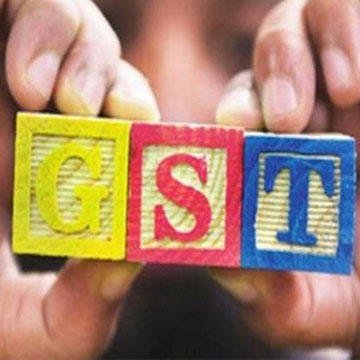 New Delhi:
New Delhi: There were no unpleasant surprises. The first day of crucial Srinagar meet of the Goods and Services Tax (GST) council produced some good news for the aam aadmi. The prices of most daily use items for common man, including cereals, sugar, tea, medicines, vegetables, eggs, milk and cell phones, are kept below a moderate 18 percent rate.
To be precise, a host of essential items--fresh meat, fish chicken, eggs, milk, butter milk, curd, natural honey, fresh fruits and vegetables, flour, besan, bread, prasad, salt, bindi. Sindoor, stamps, judicial papers, printed books, newspapers, bangles, handloom etc—are in the zero percent bracket (read an Economic Times story here).
For the urban dweller too, there aren’t any shockers. Most of his preferred items such as refined sugar, pasta, cornflakes, pastries and cakes, preserved vegetables, jams, sauces, soups, ice cream, instant food mixes, mineral water and tissues are in the 18 percent bracket. In short, around 81 percent of a total of 1,211 items, rates of which were decided on Thursday, is in the 18 percent bracket or below.
To be precise, 14 percent of items are under the 5 percent slab, 17 percent under the 12 percent, 43 percent under the 18 percent and 1 percent under the 28 percent bracket. In the highest bracket are items including chocolate, pan masala, aerated water, paint, deodorants, shaving creams, after shave, hair shampoo, dye, sunscreen, wallpaper, ceramic tiles, water heater, dishwasher, weighing machine and washing machine.
On demerit goods such as tobacco and aerated drinks, there is likely to be additional cess, the money which will be used to compensate state’s initial losses.
Bringing majority daily used, essential items in the lower tax slabs partly discards concerns on GST stoking inflation in the roll out phase, only partly. The full impact on inflation depends a lot on rates on services which will be decided on Friday, day 2 of the Srinagar meeting.
As this writer mentioned in this article on Thursday it is highly critical to keep the rate on essential items at the minimum to avoid any high inflation shocks.
Time and again, economists have warned about this and the government has assured that the GST wouldn’t stoke inflation. If inflation shoots up, this would have put the monetary policy committee (MPC) under tremendous pressure to cut the RBI’s key interest rate to support growth at the same time keeping the inflation battle on.
Both Finance Minister Arun Jaitley and Revenue Secretary Hasmukh Adhia have been assuring that GST won’t be inflationary, saying 60 percent of the items which are currently taxed at average 32 percent (comprising standard rate of excise duty is 12.5 percent, standard rate of VAT is 14 percent, other levies like Central Sales Tax, entry tax and some component of service tax) will now be taxed at a lower 28 percent. But, the RBI wasn’t too confident about this. The new rate structure for goods and services will offer more clarity to the central bank.
Secondly, it is now clear that the shift to new tax regime won’t be a burden to common man if things go as planned. He doesn’t need to shell out more to feed his family. In fact, as mentioned earlier, there is a cost reduction in majority items. Despite the fact that GST is a major reform step for the economy and a game changer, the concern was that the common man will have to pay a price for the radical change. In turn, this would have impacted companies too hitting their sales. But, under the new rate structure, companies can pass on the GST benefit to the end-consumer. This is something the industry has promised (read a report here).
Having successfully mapped the new GST rates with goods, (though full details are yet to come out yet), the next big thing to watch out for is how the council will fix the rates on services. As DK Pant, chief economist at India Ratings, a Fitch Group company, points out in this article, services, which are more than half of gross value added, will decide which way inflation will move.
“It is expected that services like health, education, telecom and electricity could see higher tax. The overall inflationary impact will also depend on goods which are outside the GST," Pant said.
The finer details of the rate structure will likely come out in the days ahead when the GST Council finishes its Srinagar meeting and consultation with government departments. The MPC and RBI will keep a close look on the over rate structure to chart their future roadmap on inflation battle. For now, watch out for the rates on services.
 New Delhi: There were no unpleasant surprises. The first day of crucial Srinagar meet of the Goods and Services Tax (GST) council produced some good news for the aam aadmi. The prices of most daily use items for common man, including cereals, sugar, tea, medicines, vegetables, eggs, milk and cell phones, are kept below a moderate 18 percent rate.
New Delhi: There were no unpleasant surprises. The first day of crucial Srinagar meet of the Goods and Services Tax (GST) council produced some good news for the aam aadmi. The prices of most daily use items for common man, including cereals, sugar, tea, medicines, vegetables, eggs, milk and cell phones, are kept below a moderate 18 percent rate.